
The red knot or just knot is a medium-sized shorebird which breeds in tundra and the Arctic Cordillera in the far north of Canada, Europe, and Russia. It is a large member of the Calidris sandpipers, second only to the great knot. Six subspecies are recognised.
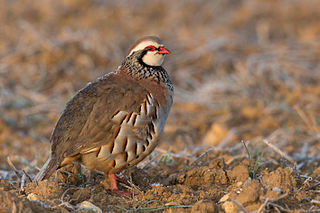
The red-legged partridge is a gamebird in the pheasant family Phasianidae of the order Galliformes, gallinaceous birds. It is sometimes known as French partridge, to distinguish it from the English or grey partridge. The genus name is from Ancient Greek alektoris a farmyard chicken, and rufa is Latin for red or rufous.

Formica is a genus of ants of the family Formicidae, including species commonly known as wood ants, mound ants, thatching ants, and field ants. Formica is the type genus of the Formicidae, and of the subfamily Formicinae. The type species of genus Formica is the European red wood ant Formica rufa. Ants of this genus tend to be between 4 and 8 mm long. Ants belonging to the Formica genus possess a single knob or bump located between their thorax and abdomen. These ants primarily feed on honeydew, a sugary liquid produced by aphids. Interestingly, Formica ants appear to take on a shepherding role with smaller aphids, relocating them to different parts of plants to ensure a continuous food source for the aphids. By doing so, the ants can establish a relatively sustainable honeydew supply for both themselves and their colony.

The African darter (Anhinga rufa), sometimes called the snakebird, is a water bird of sub-Saharan Africa and Iraq.
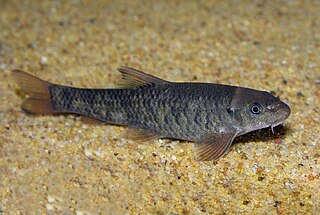
The red garra, also known as the doctor fish or nibble fish, is a species of cyprinid that is native to a wide range of freshwater habitats in subtropical parts of Western Asia. This small fish typically is up to about 14 centimeters in total length, but locally individuals can reach as much as 24 cm (9.5 in).

Formica rufa, also known as the red wood ant, southern wood ant, or horse ant, is a boreal member of the Formica rufa group of ants, and is the type species for that group, being described already by Linneaus. It is native to Eurasia, with a recorded distribution stretching from the middle of Scandinavia to the northern Iberia and Anatolia, and from Great Britain to Lake Baikal, with unconfirmed reportings of it also to the Russian Far East. There are claims that it can be found in North America, but this is not confirmed in specialised literature, and no recent publication where North American wood ants are listed mentions it as present, while records from North America are all listed as dubious or unconfirmed in a record compilation. Workers head and thorax are colored red and the abdomen brownish-black, usually with a dorsal dark patches on the head and promensonotum, although some individuals may be more uniform reddish and even have some red on the part of the gastern facing the body. In order to separate them from closely related species, specimens needs to be inspected under magnification, where difference in hairyness are among the telling characteristics, with Formica rufa being more hairy than per example Formica polyctena but less hairy than Formica lugubris. Workers are polymorphic, measuring 4.5–9 mm in length. They have large mandibles, and like many other ant species, they are able to spray formic acid from their abdomens as a defence. Formic acid was first extracted in 1671 by the English naturalist John Ray by distilling a large number of crushed ants of this species. These ants primarily eat honeydew from aphids. Some groups form large networks of connected nests with multiple queen colonies, while others have single-queen colonies.

The mountain beaver is a North American rodent. It is the only living member of its genus, Aplodontia, and family, Aplodontiidae. It should not be confused with true North American and Eurasian beavers, to which it is not closely related; the mountain beaver is instead more closely related to squirrels, although its less-efficient renal system was thought to indicate greater relative antiquity for the species. There are seven subspecies of mountain beavers, six of which are found in California and three of which are endemic to the state.

The Bornean crested fireback is a medium-sized forest pheasant from Borneo and the Bangka Belitung Islands. It is the type species of the genus Lophura. Prior to 2023, it was referred to as simply the crested fireback as the Malayan crested fireback was lumped with this species, though both have since been split.
The elm cultivar Ulmus 'Rufa' [:rufous-coloured] was listed as U. campestris f. rufa by Georg Dieck, of Zöschen, Germany, without description in Haupt-catalog der Obst- und gehölzbaumschulen des ritterguts Zöschen bei Merseburg, Nachtrag I (1887), though it had been in cultivation for some decades before this date. It was considered "possibly Ulmus carpinifolia" by Green.

Rufa Mae Ocampo Quinto-Magallanes is a Filipino actress, comedian, television presenter, producer and model. Known for her camp and signature comedic performances in film and television, she has been cited as a notable figure in Philippine pop culture. Dubbed as the "Comedy Princess", she is a ten-time Best Comedy Actress winner at the Star Awards for Television, the most for any actress. Her other accolades include a Golden Screen Award, a ComGuild Academe’s Choice Award and "Best Supporting Actress" at the PMPC Star Awards for Movies, including a nomination from the FAMAS Award for Best Actress. The Philippine Star named her one of the greatest comedians of all time in 2006.
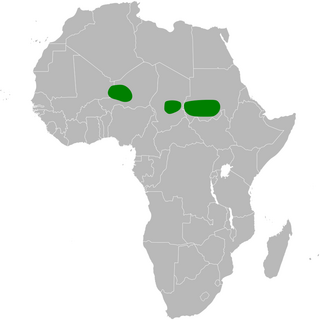
The rusty bush lark, also known as the rusty lark is a species of lark in the family Alaudidae found in the Sahel region of north-central Africa.

Club Sportiv Sportul Snagov, commonly known as Sportul Snagov or simply as Snagov, was a Romanian professional football club from Snagov, Ilfov County founded in 2007 as Damila Măciuca and dissolved in 2020. Last time the club played in the Liga II, the second-tier in the Romanian football system, but withdrew during the winter-break of the 2019–20 season, due to financial problems.
Maria Krista Aguilar, known professionally as Rufa Mi, is a Filipina comedian, presenter, actress, and singer. Rufa Mi is known for impersonating actress Rufa Mae Quinto.
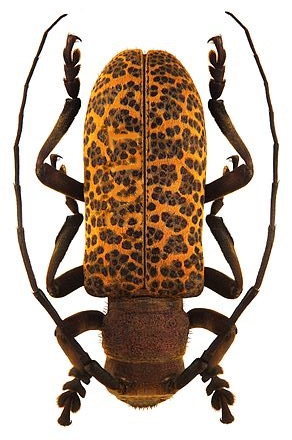
Estola is a genus of longhorn beetles of the subfamily Lamiinae, containing the following species:
Estola benjamini is a species of beetle in the family Cerambycidae. It was described by Stephan von Breuning in 1940. It is known from Colombia.
Estola brunnescens is a species of beetle in the family Cerambycidae. It was described by Stephan von Breuning in 1940. It is known from Colombia and Venezuela.
Estola nigropunctata is a species of beetle in the family Cerambycidae. It was described by Stephan von Breuning in 1940. It is known from Brazil.
Estola freyi is a species of beetle in the family Cerambycidae. It was described by Stephan von Breuning in 1955. It is known from Trinidad.
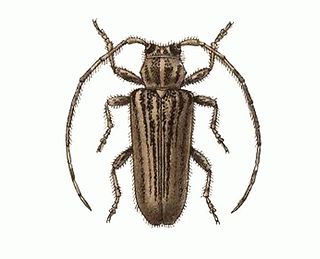
Estola vittulata is a species of beetle in the family Cerambycidae. It was described by Henry Walter Bates in 1874. It is known from Panama, Mexico and Venezuela.
Estola insularis is a species of beetle in the family Cerambycidae. It was described by Blair in 1933.












